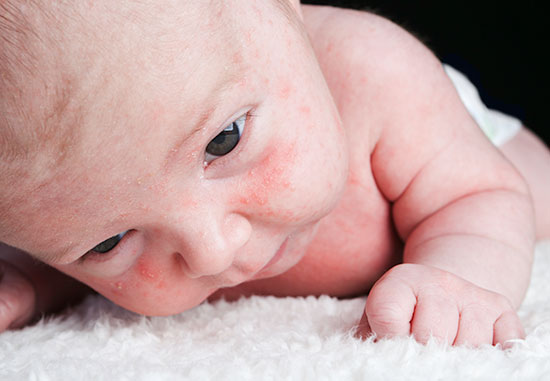About milia
Milia are tiny white bumps that sometimes come up on babies’ faces soon after birth. They happen when the sweat glands get blocked. The glands get blocked because they aren’t yet fully developed.
Milia are very common.
Symptoms of milia
In newborns, milia look like tiny white bumps. They come up mostly on the nose and cheeks, but they can appear anywhere on the face. The bumps can break easily and leave a scaly spot.
Milia are usually less than 1 mm across, but they can measure up to 3 mm.
They don’t hurt or itch.

Medical help: when to get it for babies with milia
If you notice a coloured rash or crusting around the milia, take your baby to see your GP.
Treatment for milia
In newborns, you don’t need to treat milia with creams or ointments, because the bumps will go away by themselves. They usually go away within weeks or months after birth.
They don’t leave scars, so don’t try to burst them. Be patient and wait for them to go away naturally.
Milia prevention
Milia are hard to prevent, but it can help to gently wash your baby’s face every day and pat dry. Avoid pinching, squeezing or scrubbing the lumps.